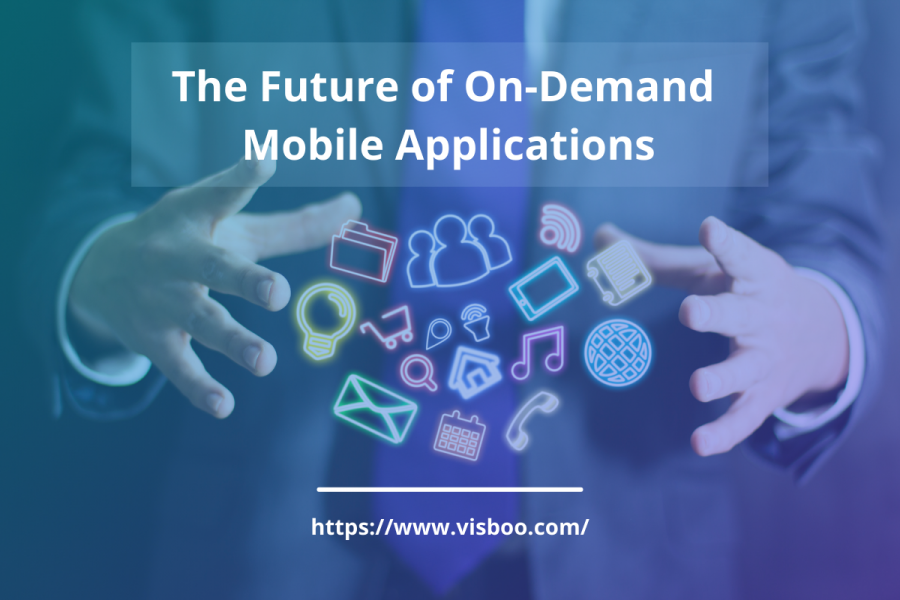The size of the On-Demand economy according to a report by Harvard Business Review is drawing traction of a whopping 22.4 million customers across all niches. Another report from PwC mentions that the total market value for the future of on-demand apps will cross $335 Billion by the year 2025. Most reports and statistics indicate that on-demand apps will play the biggest role in the digitisation of everyday life.
On-Demand mobile apps that allow users to order products and services right through their handheld devices, track the delivery and get them delivered when they need and where they need ensures establishing a direct and close connection between businesses and customers. On-demand apps can be of different types ranging from B2B aggregator apps to B2C direct delivery apps to person apps.
Today in Ireland, the on-demand app market has literally exploded across diverse niches ranging from food and groceries to car rental services to doctors on-demand apps to on-demand apps for barbers and beauticians. When it comes to on-demand app development dublin and Limerick boast of a history of several successful ventures across niches.
Here we are going to explain top futuristics trends that are going to shape the future of on-demand mobile apps.
Contactless Delivery and Hygiene
The COVID-19 pandemic that gripped the entire world in its clutches forcing people to live indoors for months on end, has also been a major factor in accelerating the growth of on-demand mobile apps around the world. People who were traditionally in-store buyers started to make orders online. In that sense, the pandemic actually expanded the market of on-demand apps to a great extent.
But the biggest change that on-demand apps brought in the same time span is the increasing popularity of contactless delivery and maintenance of hygiene. The pandemic brought new hygiene norms into the forefront and made contactless delivery of goods an established practice. For food and grocery product delivery to restaurant aggregator apps to any other apps for doorstep delivery, contactless delivery became the new normal.
Read More: What Process to Follow to Build A Mobile App In 2021?
On-demand apps getting the push of IoT
On-demand mobile apps in the time to come will offer a more integrated and streamlined user experience thanks to the connected Internet of Things (IoT) gadgets. Already you can tell your Amazon Alexa to order a Uber taxi and there are smart home automation systems to make food or cab orders just when you are ready to go out to your workplace.
Such smart automation corresponding to both IoT and on-demand mobile apps is likely to make living smarter than ever before. For example, your smart vehicle system can automatically book a parking lot in the destination city based upon your proximity to the place and availability of slots. The future of on-demand mobile apps is closely integrated with everything, already you can tell your Amazon Alexa to order a Uber taxi and there are smart home automation systems to make food or cab orders just when you are ready to go out to your workplace
5G impact for on-demand apps
The 5G network is already here with the promise of offering never-before data speed and zero latency in data transfer. Obviously, like every other app niche, on-demand apps will also have great exposure to this advanced network standard.
The 5G network will have an exhilarating impact on many aspects of on-demand apps. Whether it is about instant loading of the GPS map and real-time tracking of the delivery person or it is about more streamlined chat support with quick replies, the 5G network will enhance user experience more than ever before. In the case of taxi aggregator apps, 5G network will ensure more streamlined GPS location tracking than ever before.
More intelligent chat support
For some time on-demand apps have embraced automation in customer support by using artificial intelligence (AI) and machine learning (ML) technologies. Both AI and ML by garnering deeper data-driven user insights help chatbots to answer in a more personalised and audience-specific manner.
Intelligent chatbots powered by AI and ML technologies in on-demand apps will flag issues and queries less for human support. In the time to come, customer support chatbots will be more well equipped, capable and dynamic in developing conversation with the users.
Advanced machine learning algorithms by using historical browsing data and previous order and interaction data will make better offers and promotions that are likely to garner more sales and business conversion. For solving customer queries, future chatbots will be able to respond quicker with a 360-degree evaluation of the customer choices and purchase history.
Read More: Why React Native for mobile app development projects in 2021?
AR-based immersive experience
Just the way augmented reality (AR) has already penetrated the e-commerce and in-store shopping experience by blurring the gap between live reality and digital shopping environment, the same may extend the user experience of on-demand apps to a great extent.
Thanks to Augmented Reality (AR), an on-demand dentist app can enable you to upload 3D images of your mouth and teeth and get an instant evaluation. Similarly, a food aggregator app can allow you to upload images of a food item and make a custom order of the same item. AR technology will ensure limitless possibilities for on-demand app user experience.
The proliferation of Mobile Wallet
As the on-demand apps have extended to every possible niche to reduce the legwork of people and to ensure a more streamlined experience by reducing the friction to a minimum level, contactless mobile payment will become the norm and reduce other payment methods.
In the coming years, cashless mobile wallet payment apps will become the principal mediums for making payment and carrying out transactions. Many on-demand mobile apps in fact will come with their own integrated mobile wallet apps to facilitate quick money transfer without relying on third-party apps.
Conclusion
As we already know, the future of on-demand apps always looks exceptionally promising because of the ease, flexibility and user experience they offer. In the time to come, cutting edge technologies and new development approaches will only fine-tune on-demand app user experience in a never-before manner. The future of on-demand apps expectations from the on-demand app development industry will revolve mostly around these sophisticated technologies.




